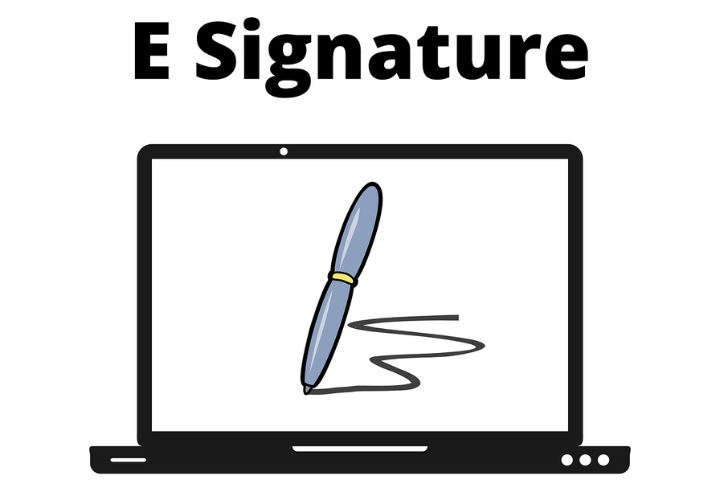
In today’s fast-paced, tech-driven office environment, certain communication practices have become less effective or even counterproductive. As businesses adapt to new tools and workflows, it’s important to recognize which habits need to change. Here are 20 outdated office communication habits that hinder progress.
Sending Lengthy Email Chains For Simple Decisions

How many times have you scrolled through a 30-message email thread just to find one key detail? Email chains stretch conversations unnecessarily, leading to confusion and delays. A shared document or a brief Slack discussion resolves issues faster so everyone stays aligned without the inbox overload.
Scheduling Meetings For Every Discussion

Meetings were once the gold standard for collaboration, but many now serve little purpose. Clear updates shared through digital tools often replace the need for lengthy discussions. Live conversations should focus on meaningful engagement and problem-solving rather than routine updates.
Using Formal Memos For Internal Updates

In an era of instant communication, traditional memos often go unnoticed. Important updates should be clear and easily accessible. Modern workplace tools ensure key messages reach employees in real time, which minimizes the risk of critical information being overlooked or lost in outdated documentation.
Relying On Open-Door Policies

An “open door” sounds inviting, but in reality, most employees hesitate to interrupt managers. Without scheduled check-ins, valuable feedback is delayed or lost entirely. Setting up biweekly one-on-ones and anonymous surveys creates a culture where input is given freely—without employees feeling intruding.
Overloading Employees With Company-Wide Emails

It’s tempting to send every update to the entire staff, but excessive emails cause fatigue. Generic announcements get ignored, especially when they don’t apply to half the recipients. Instead, segment communications by department or interest to ensure messages reach the right people without clogging everyone’s inbox.
Expecting Instant Replies To Every Email

Not every email is urgent, yet workplace culture often pressures employees to respond immediately. This disrupts deep work and forces constant context-switching. Setting clear response-time expectations—like responding within a few hours rather than minutes—protects focus while still keeping communication flowing.
Using Jargon And Overly Formal Language In Emails

“Per my last email…” or “synergize our collective efforts…”—sound familiar? Overused jargon creates distance and confusion rather than clarity. Straightforward, conversational language ensures messages are understood better. Instead of making colleagues decipher corporate speech, say exactly what needs to be said in plain terms.
Hosting Lengthy, Unstructured Conference Calls

Rambling calls without focus drain productivity and engagement. Participants often lose interest or overlook essential details. Structured meetings with clear goals and defined outcomes ensure discussions stay relevant and impactful. If a call lacks direction, it probably could have been a two-minute voice message or an email summary.
Sending Mass Generic Surveys

Employee engagement surveys flood inboxes, yet most feel irrelevant. Asking employees for generic feedback once a year doesn’t capture real concerns. A tailored system for collecting input encourages meaningful responses, which makes it easier to identify workplace improvements without overwhelming participants.
Relying Solely On In-Person Meetings For Major Decisions

In a hybrid world, requiring physical presence for every big decision excludes remote workers and slows progress. Virtual collaboration tools like Miro, Notion, or real-time whiteboards allow teams to brainstorm and vote on key topics—even if they’re on opposite sides of the globe.
Using Cc And Bcc Excessively In Emails

CC’ing half the office creates noise. People end up ignoring emails because they assume they aren’t their responsibility. Instead of blanket CC’ing, tag key people for action and provide a quick summary to others who need awareness without overwhelming their inbox.
Treating Instant Messaging As An Informal, Low-Priority Channel

Treating instant messaging as an informal, low-priority channel is an outdated practice. In today’s office, especially with remote work, it’s a vital tool for quick, real-time communication. Dismissing it slows decision-making, creates delays, and impedes productivity, making it essential for efficient teamwork.
Using Bulletin Boards For Critical Office Announcements

A paper pinned to a board in the breakroom is no longer an effective way to distribute important news. Employees move between remote and office settings. This makes digital dashboards, automated notifications, and internal newsletters far more effective for keeping everyone informed.
Expecting Employees To Be Available 24/7

Constant connectivity isn’t sustainable. When work-life boundaries blur, burnout follows. Setting clear expectations—like avoiding after-hours emails or using scheduling tools—ensures employees recharge properly. A well-rested team produces better results than one that’s always “on” but mentally exhausted.
Conducting Annual Performance Reviews

Waiting a year to discuss an employee’s growth is like coaching a sports team once per season. Consistent feedback helps keep performance on track. Frequent conversations ensure employees adjust and grow continuously rather than waiting for an annual evaluation.
Using Printed Handbooks

A thick employee manual sits on a shelf, gathering dust. If policies and guidelines are not easy to search and update, they’re useless. Digital knowledge bases allow employees to find answers instantly while ensuring HR can update policies without printing another 100-page booklet.
Relying On Landline Phones For Office Communication

The ringing desk phone in an empty office is an all-too-common sight. Mobile apps, VoIP services, and direct messaging apps make landlines obsolete. With flexible work arrangements, a digital-first approach to communication keeps teams connected without outdated phone systems.
Using Standardized Email Signatures With Outdated Contact Details

A fax number that hasn’t been used since 2010? A job title that changed six months ago? Static email signatures create confusion. Updating signature formats enhances professionalism while making it effortless for colleagues and clients to connect without outdated information getting in the way.
Following A Strict Hierarchical Communication Flow

Traditional top-down communication bottlenecks information. When employees can’t easily access decision-makers, progress stalls. A more open communication culture—where feedback flows freely in all directions—helps teams solve problems faster and fosters innovation at every level.
Distributing Physical Business Cards

Networking has gone digital, yet some still hand out paper cards that often get lost or forgotten. QR codes, LinkedIn connections, and digital business cards allow for seamless information exchange—ensuring contacts remain accessible long after the handshake ends.
